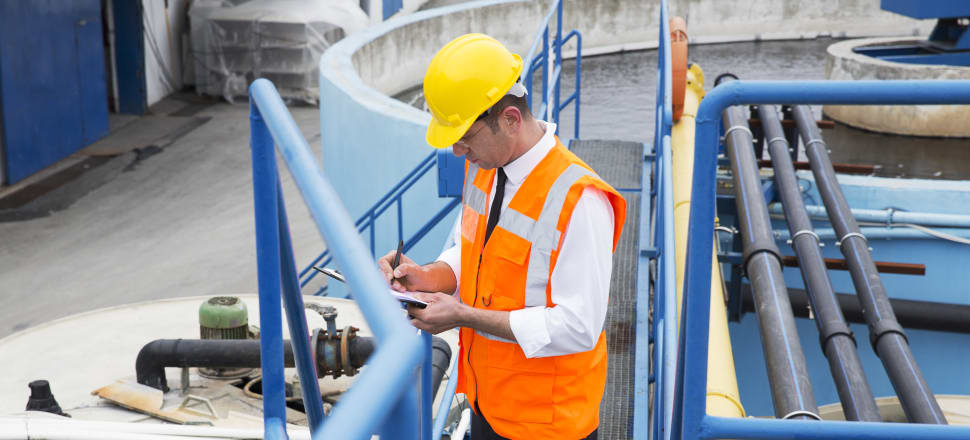
The Government goes into this week's Budget with a list of $16 billion in quantifiable contingent liabilities; some costs may never transpire but some will now come due
Analysis: Ministers were always clear that the decision to increase the number of new water services providers from four to 10 would come at a cost to water users; this week the Government must also forecast some of the cost to taxpayers.
The Treasury warned, in its half-year economic and fiscal update, of a risk that actual costs would exceed those forecast.
"As part of the reform, the new water services entities will require investment in new ICT to ensure they are functional on day one of operation," the update said. "The fiscal forecasts include estimated operating expenditure of $582 million and capital expenditure of $75 m for this ICT investment.
READ MORE: * 'A price worth paying': Counting the cost of wider local voice * Credit agency warns NZers are blind to 'astronomical cost' * Jonathan Milne: Water reforms cost more than just money
It's just one on a list of quantifiable contingent liabilities, compiled by the Treasury. Some, like the Asian Development Bank calling in all the $3.4 billion capital liabilities to finance lending to developing nations, are unlikely to eventuate any time soon. Others, like the $660m for the Three Waters IT operating system, are looming.
The half-year update says: "There is a risk that additional funding may be required for the ICT system and the actual split between operating and capital expenditure may differ to what has been assumed in the fiscal forecasts."
Rising construction costs are also putting pressure on the National Land Transport Fund, which finances the highway network, and the New Zealand Upgrade Programme which pays for new low emissions transport infrastructure. In addition, the public-private partnership to build the Puhoi to Warkworth motorway has been beset by delays; Waka Kotahi says there's no evidence it should have to pay the entire $280m sought by the NX2 construction consortium, but doesn't deny it may be liable for some of that.
Quantifiable contingent risks and liabilities
And Australian company CPB Contractors has lodged six claims for $212m in extra money for the troubled and long-delayed Parakiore metro sports facility it is building in Christchurch. Crown rebuild company Ōtākaro disputes the claims, and hopes to settle the matter behind closed doors in a private arbitration process.
And then there's up to $127m in liabilities that the Ministry of Primary Industries could face, if it has to compensate farmers for destroyed livestock and crops, in responding to incursions like bonamia ostraea, a parasite that infects and kills Bluff oysters.
Thursday's Budget must update those forecast costs, and in some cases allocate the money to pay them. The most imminent cost looks to be the Three Waters ICT system.
Already, the Department of Internal Affairs has contracted US-based software provider Infor to conduct a six-week scoping project – the first step in the procurement process to select a supplier to provide the systems of record for the new water services entities.
Infor is a somewhat contentious choice to provide the system. It's already been embroiled in disputes with Auckland Transport and Waikato Regional Council over contracts.
The company's NZ arm has just reported a loss after paying a legal settlement of $6.5m to Auckland Transport late last year, which Reseller News reports was related to issues with AT's ambitious and long-running asset management project.
This week, Infor wouldn't say much about AT or about the big Three Waters project. "We are following the New Zealand Department of Internal Affairs' lead in communicating about this project and will be back in touch when we learn more," says Steve Bauer, the company's Vice President for public relations.
There's added uncertainty after the Government increased the number of proposed regional water incorporations from four to 10, and pushed out the timeframe to transfer water assets by two years.
Heather Shotter, the executive director of Internal Affairs' Water Services Reform National Transition Unit, is more forthcoming.
She says the 10 new publicly-owned water services entities that will operate New Zealand’s drinking water, wastewater and stormwater services are on track for establishment before July 2026.
"The Water Services Reform National Transition Unit is reviewing its current plans to ensure decisions made around ICT systems continue to be suitable for a 10-entity model and are in line with the new establishment timeframe," she says.
The information technology investment includes a so-called "Systems of Record" project – the core ICT systems that will support the primary business and operational processes of the new entities, including financial, asset, supply chain, workflow, people and customer management. Pretty much everything that can be done on a computer, essentially.
This system is "critical" to realising the longer-term transformational benefits of the water services reforms, she adds, regardless of whether there are four or 10 water services entities.
The reform programme, based in Internal Affairs in Wellington, has been running a process to identify preferred suppliers who will be involved in establishing the Systems of Record, she says. "We have let a number of discrete contracts in relation to this project."







